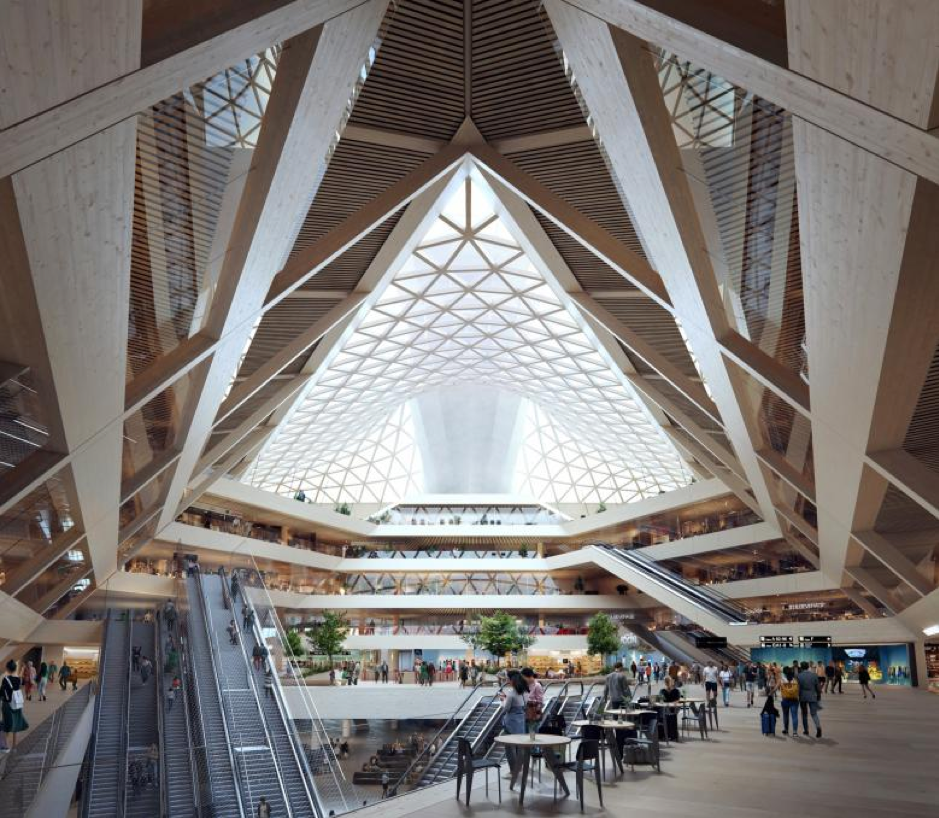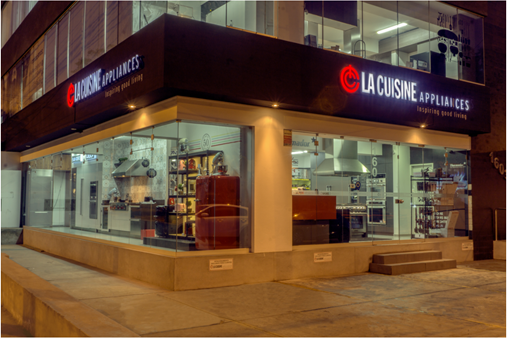
Our Company
Locations
Contact Us
Newsletter
Sign up to receive email updates on the latest products, collections and campaigns.

The new terminal at Zurich airport will be made of wood. The project will be built jointly by BIG, HOK, 10:8 Architects, and engineer Bruno Happold to replace the existing Doc A facilities.
The proposal won the competition created for this purpose in 2020, being the final winner thanks to the original and sustainable idea of using regional wood as the main material. This was certainly a clever and attractive touch on the part of the studios that worked on this project.
A first-class proposal
The competition judges deemed the multidisciplinary team’s project to be “the most convincing proposal from an operational, economic, and sustainable point of view.” The reasons for this decision are evident from the proposal.
For example, the central area of the new terminal will have seven atriums of different levels where geometric figures and the conjunction between glass and wood will be the protagonists of a center that will house stores, restaurants, services for passersby, and airport services, including arrivals and departures.
The presence of wood in its most natural state will give the sensation of being in a country cabin, and its valley-shaped design will provide openness and better use of space.

Honoring the Alps
Both the shape of the central atrium and the shape of the windows in the boarding areas have an inverted V as the predominant shape. This is intended to honor the Swiss Alps and the construction patterns of the area that have been maintained for generations.
At first glance, the proposal may seem a bit simple. But, trained eyes will clearly see that such an assessment is far from reality.
The diagonal wooden column grid, the color uniformity, and the simplicity of the design lines only contemplate one purpose: timelessness. The architects focused on designing a proposal that can be adapted in the future to larger extensions without compromising the aesthetics of the hub, while at the same time being friendly to new technologies.
The use of local wood as the main material lowers construction costs, reduces the carbon footprint, and ensures that future renovations can respect the identity of the project as its materials are always available. In addition, the inclusion of solar panels, broad lighting entrances, and a water collection and recycling system, all contribute to the sustainability of what is sure to become a benchmark airport for new airport structures when it is opened to the public, which is expected to happen in 10 years.

Sign up to receive email updates on the latest products, collections and campaigns.
Carrera 9 Nº80-45
Bogotá D.C., Colombia
Monday to Friday: 11:00 a.m. - 07:00 p.m.
Saturday: 11:00 a.m. - 06:00 p.m.
(+571) 432.7408/7493

Calle 77 #72-37
Barranquilla, Colombia
Monday to Friday: 08:00 a.m. - 06:00 p.m.
Saturday: 09:00 a.m. - 01:00 p.m.
(+57) 605 352 0851

Edificio La Cuisine
Costado Suroeste, C.C. La Paco
Escazú, Costa Rica
Monday to Friday: 09:00 a.m. - 05:00 p.m.
Saturday: 10:00 a.m. - 04:00 p.m.
(+506) 4000.3555

Galerías de Puntacana No. 51
Punta Cana, La Altagracia, R.D.
Monday to Friday: 09:00 a.m. - 06:00 p.m.
Saturday: 10:00 a.m. - 01:00 p.m.
(809) 378.9999

C/Rafael Augusto Sánchez No.22,
Piantini, Santo Domingo, R.D.
Monday to Friday: 09:00 a.m. - 06:00 p.m.
Saturday: 09:00 a.m. - 01:00 p.m.
(809) 378.9999

18187 Biscayne Bvld., Aventura
FL 33160
Monday to Friday: 10:00 a.m. - 06:00 p.m.
Saturdays by appointment.
(786) 322 5432
www.lacuisineappliances.com
sales@lacuisineappliances.com

3232 Coral Way,
Miami FL 33145
Monday to Friday: 10:00 a.m. - 06:00 p.m.
Saturday: 10:00 a.m. - 03:00 p.m
(305) 442-9006
www.lacuisineappliances.com

2005 NW 115th Avenue
Miami, FL 33172
Monday to Friday: 09:00 a.m. - 05:30 p.m.
Saturday: Closed
(+1) 305 418.0010
info@lacuisineinternational.com

Obarrio. Av. Samuel Lewis,
Addison House Plaza,
Local No.11, Panamá
Monday to Friday: 09:00 a.m. - 06:00 p.m.
Saturday: 10:00 a.m. - 04:00 p.m.
(+507) 265.2546/2547

Av. Caminos del Inca 1603,
Santiago de Surco, Perú
Monday to Friday: 10:00 a.m. – 07:00 p.m.
Saturday: 10:00 a.m. – 01:00 p.m.
(+511) 637.7087

Centro Comercial San Ignacio, Nivel C, local No.5
Caracas, Venezuela
Monday to Saturday: 10:00 a.m. – 07:00 p.m.
(+58) 212 264.5252
(+58) 414 018.5352 (Wholesale)
ventas@lacuisineappliances.com

Complejo Pradera Ofibodegas No.13,
20 calle final Z. 10 Km. 6.8 Carretera a Muxbal,
Santa Catarina Pínula, Guatemala
Monday to Friday: 08:00 a.m. - 05:30 p.m.
Saturday: 09:00 a.m. - 12:30 p.m.
(+502) 6671-3400
